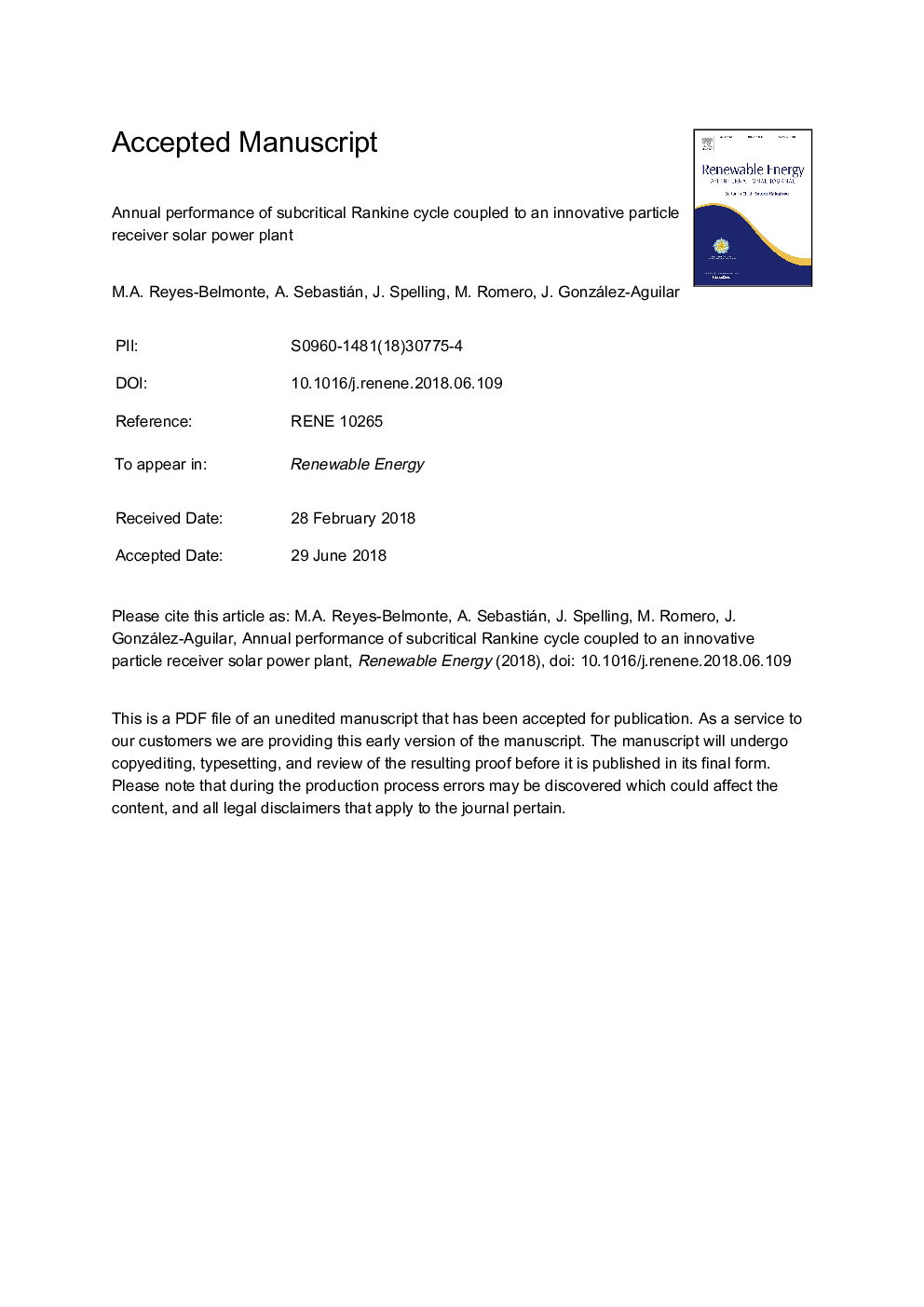| Article ID | Journal | Published Year | Pages | File Type |
|---|---|---|---|---|
| 6763822 | Renewable Energy | 2019 | 39 Pages |
Abstract
Concentrated solar power plants using molten salts as heat transfer and storage fluid have emerged as the preferred commercial solution for solar thermal electricity in central receiver technology. Despite their ability to store large amounts of thermal energy and efficient receiver designs, further efficiency improvements are constrained by tight temperature restrictions when using molten salts (290â¯Â°C-565â¯Â°C). In this work, a novel heat transfer fluid based on a dense particle suspension (DPS) is used due to its excellent thermophysical properties that extend the operating temperature of solar receiver and allow its coupling with higher-efficiency power cycles. In this paper, the design of a DPS solar receiver working at 650â¯Â°C has been optimized for two commercial sizes (50 MWth and 290 MWth) coupled to an optimized subcritical Rankine cycle. The results showed that a five-extraction reheated Rankine cycle operating at 610â¯Â°C and 180â¯bar maximizes power plant efficiency when coupled with a DPS central receiver, giving 41% power block efficiency and 23% sun-to-electricity efficiency. For optimization purposes at design point conditions, in-house code programmed into MATLAB platform was used while TRNSYS software was employed for annual plant performance analysis.
Related Topics
Physical Sciences and Engineering
Energy
Renewable Energy, Sustainability and the Environment
Authors
M.A. Reyes-Belmonte, A. Sebastián, J. Spelling, M. Romero, J. González-Aguilar,
